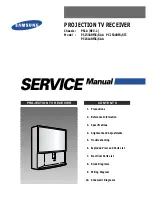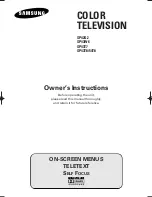
Startco Engineering Ltd.
Page 25
FPU-16 Feeder Protection Unit
Rev. 1
Pub. FPU-16-M, November, 1997
Downloaded from the Internet, see Disclaimer.
4.3
SHIELDED CABLES
Feeder protection equipment must operate in electrically noisy environments.
Use shielded, twisted cables for all low-level signals to minimize electrostatic
and electromagnetic coupling. The shield must enclose the signal conductors
as completely as possible and the shield must have only one connection to
ground.
Input-cable shields from the ICT-2, the operation-counter switch, and the remote
program-enable switch must be grounded at the FPU-16 end only. Analog- and
communications-output cables should be grounded at the receiver end only.
Terminate foil-shielded input cables as shown in Figure 8:
1.
Strip 150 mm (6") of outer jacket from the cable.
2.
Peel and strip the foil shield from the drain and insulated wires.
3.
Trim the insulated wires to 50 mm (2"), and strip 6 mm (1/4") of insulation
from each wire. Leave the drain wire full length.
4.
Connect the insulated wires to the terminal block.
5.
Group the drain wires from all shielded input cables and twist them
together. Trim the drain wires to length and attach the crimp-type ground
lug provided. For panel-mount units, fasten the lug with the shield screw.
For surface-mount units, install the lug between the screw head and the
lockwasher on one of the FPU-16 mounting screws.
6.
Repeat steps 1 and 2 at the other end of the cable. Cut off the drain wire
and use heat-shrink sleeving or tape to insulate the shield from ground.
Terminate output cables in the same manner. Ground the drain wires at the
receiver ends only.
4.4
FPU-16 CONNECTIONS
All connections to the FPU-16 are made through two plug-in, wire-clamping
terminal blocks. Each terminal will accept one No. 14 AWG conductor. The
supply-voltage terminal block has a keying pin blocking terminal 9 so that
supply voltage cannot be accidentally applied to the signal terminals. See
Figure 9 for a typical connection diagram.
















































